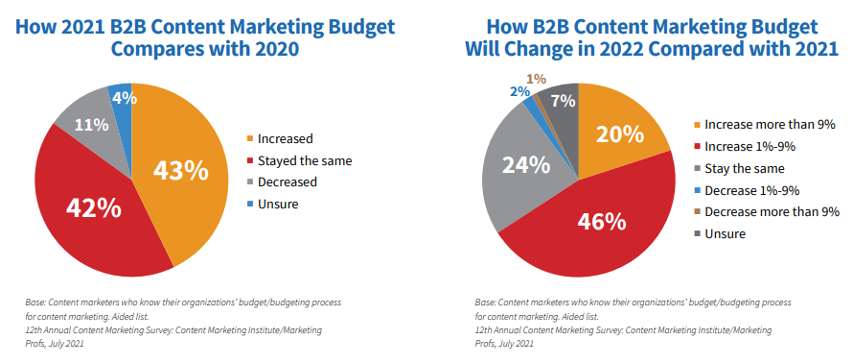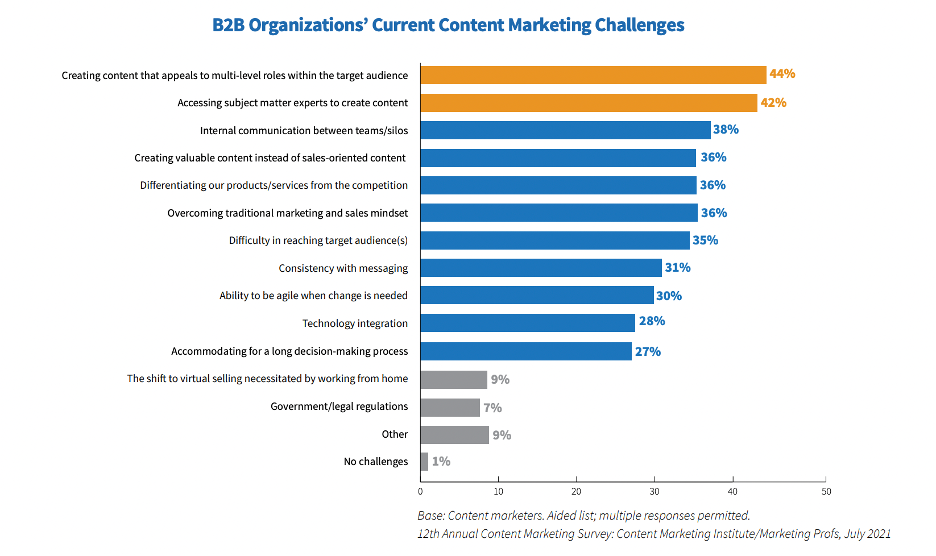It’s no secret that the online world is overflowing with noise. Every brand, big or small, is vying for attention, making it difficult to grab the spotlight. Consumers are growing increasingly skeptical of self-promotion, which is why the demand for new and innovative digital marketing strategies is on the rise.
The last few years have put a larger strain on the ability of growing businesses to survive. Those that have made it this far can’t afford to get complacent. They must constantly find new ways to market themselves so that they not only stand out but stay ahead of the game.
Increasing numbers of brands have leaned into influencer marketing to connect with their target customers and boost their marketing efforts. Its rise has been hard to ignore, quickly becoming a favorite among digital marketers and business owners alike. In April, I partnered with Growclass to run a session titled, “Authority, Impact, and the Future of Influencer Marketing” in which I explored how to use and create influence, collaborate with influencers, and capitalize on the major opportunity of influencer marketing. Here is more detail and insight into what was discussed.
What exactly is influencer marketing?
We are going through a revolutionary shift. First there was the industrial revolution, then the mass media revolution, and now we’re in the middle of a digital revolution. If you think about it, advertising stayed the same for about 50 years until the disruption brought forth by the Internet and social media. When is the last time you drove by a billboard or saw a newspaper ad and purchased something? Chances are it’s been a while. But when is the last time you watched a video on TikTok or Instagram of someone talking about the virtues of a particular product and then bought it? Chances are this happened much more recently.
Influencer marketing is a type of online marketing that involves businesses collaborating with individuals who have a large, highly engaged following on social media to promote their products or services. The goal of influencer marketing is to increase brand awareness, website traffic, and sales by reaching new audiences.
Unlike traditional celebrities, influencers build personal connections with their followers, and their recommendations are often highly regarded. Influencers are often experts with in-depth knowledge about certain subjects, which gives them leverage to motivate their followers to take desired actions. By collaborating with relevant influencers in your niche, you can tap into their large and dedicated social media followings and boost your brand’s visibility and credibility in the process.
These influencers are just like you and me, but they consistently post online, in the niche of their choice. For example, they may share blogs, vlogs (video blogs), tutorials and more. It can be especially effective because people often trust the individuals they follow on social media, so if they see someone they trust promoting a particular brand, they may move more quickly through the sales funnel.
Why should I care?
The influencer marketing sector isn’t going anywhere anytime soon. Influencer Marketing Hub predicts the market size to reach an estimated $24 billion by the end of 2024, indicating strong ongoing growth momentum despite challenging economic conditions.
Brand interest in sponsored content, as opposed to traditional social ads, continues to rise, and create opportunities for influencer partnerships. If you’re a marketer looking to collaborate with creators, know that research shows that 93% of creators are willing to work with brands for just free products. While this may be true, if they love the brand or the product value is high, it’s crucial to ensure that creators are fairly compensated for their time and effort. Not compensating influencers can be unethical and have negative consequences for your brand’s reputation. Remember, a successful collaboration is one where both parties benefit.
According to a report by Morning Consult, the majority of millennials and Gen Z social media users survey said they trust influencers on social media. This is up from 51% in 2019. There’s an increasingly blurred line between influencer and user-generated content creators. But the fact remains that shoppers are more likely to buy from brands that have been recommended by people they trust, which includes people raving about your products. In fact, according to Nasto, 79% of people say user generated content impacts their buying decisions and therefore developing a good mix of authentic UGC alongside your influencer campaigns could be a winning formula.
How can I get started?
According to an Adobe study, TikTok is the most popular channel for influencers, ahead of Instagram (47%), YouTube (33%) and Facebook (28%). TikTok users love tutorials with 62% of users choosing this type of content. Following closely are product or service reviews and personal stories at 38%.
Furthermore, 82% of brands believe that influencer marketing campaigns generate higher-quality leads than other types of marketing. But remember that quality is better than quantity. Up to 82% of brands say they see better ‘quality’ leads from influencer marketing campaigns over any other campaign. It’s not clear what is considered ‘quality’ in this instance, but some examples could include the original purchase order value or returning customer rate after first finding you via your influencer campaign.
How is AI playing a role?
AI is changing influencer marketing by providing tools and solutions to help brands make data-driven decisions, automating sourcing, authenticating, and managing influencer relationships. AI-powered tools analyze social media data to identify potential influencers who best match a brand’s target audience and values. These tools consider factors like demographics, interests, engagement rates, and the authenticity of an influencer’s following. This automated process saves time and helps brands find the most suitable influencers for their campaigns. Content creators and brands seem to be cautiously optimistic about the introduction of AI into their influencer marketing efforts.
A survey found that 76% of marketing agencies and 52% of influencers were already using some form of AI to analyze data, find influencer partners or support content creation. Other brands are going a step further and working with virtual influencers as an alternative to traditional creators.
With the power of AI, brands can now optimize their content to better resonate with their target audience. This ensures that consumers receive highly personalized messaging that is more likely to convert them. Additionally, AI can help companies track and analyze the performance of their influencer marketing campaigns, enabling them to make data-driven decisions. As the role of AI continues to grow, it’s exciting to see the positive impact it’s having on influencer marketing.
What kind of influencer should I work with?
Not sure whether to work with a nano-influencer or a micro-influencer? This all depends on what you’re planning to achieve through your campaign. There are many differences and benefits each offer, and it’s important to understand which type would be better for your business. Here’s a quick snapshot:
Mega-influencers > 500,000 followers
Macro-influencers 100,000-500,000 followers
Micro-influencers 10,000-100,000 followers
Nano-influencers < 10,000 followers
Influencer Marketing Hub has a great article breaking it down: Nano vs. Micro-Influencer Marketing: What’s the Difference? Once you have a clearer picture, it’s time to figure out which option is better. Research has shown that on average brands spend less than $50K on influencer marketing, while nearly 15% spend over $500K. Of course, setting a budget entirely depends on what you want to achieve, how much you’re willing to spend and what you expect your return to be.
- Reach vs. engagement. Macro-influencers offer a wider reach, while micro-influencers usually provide higher engagement rates. Consider your goals and whether you prioritize reaching a larger audience or creating meaningful connections with a more engaged community.
- Target audience. Assess your target audience and their preferences. Micro-influencers often have a niche following that closely aligns with specific demographics or interests, while macro-influencers appeal to a broader range of people. Choose influencers whose audience matches your target market.
- Authenticity. Micro-influencers are known for their authenticity and relatability. Their content feels genuine and personal, which can enhance trust and authenticity for your brand. Macro-influencers, although influential, may be perceived as more commercialized, so consider the level of authenticity that you want to convey.
- Budget. Macro-influencers typically charge higher fees due to their larger following and higher level of influence. Micro-influencers, on the other hand, may be more cost-effective, making them suitable for brands with limited budgets. Determine what you’re willing to invest, and the value you expect to receive.
- Goals and objectives. Consider your campaign objectives. Macro-influencers are best for broad brand awareness and visibility, while micro-influencers excel at niche marketing and building highly engaged communities.
- Content quality and style. Macro-influencers often have access to professional production teams, resulting in polished content. Micro-influencers may have a more organic and raw approach. Determine which aligns best with your brand image and messaging.
- Long-term partnerships. Micro-influencers may be more open to ongoing collaborations, fostering a stronger brand association. Macro-influencers are best for one-off campaigns or larger-scale initiatives.
Love it or hate it, influencer marketing works.
Influencer marketing is the fastest growing and most cost-effective method of online customer acquisition. Nearly 60% of respondents in the State of Influencer Marketing 2024: Benchmark Report intend to increase their influencer marketing spend in 2024 and 26% intend to spend more than 40% of their marketing budget.
Let’s say goodbye to the same old social media posts and breathe new life into digital marketing campaigns through relevant influencers. Allow influencers to add personal touches to their captions to keep your audiences engaged and interested. Trust their creativity and see the positive impact it can have on your brand’s image.
If you’re still not convinced influencer marketing delivers value, it’s time to dip your toe into the influencer marketing waters and take your brand to the next level! No life jacket required.











